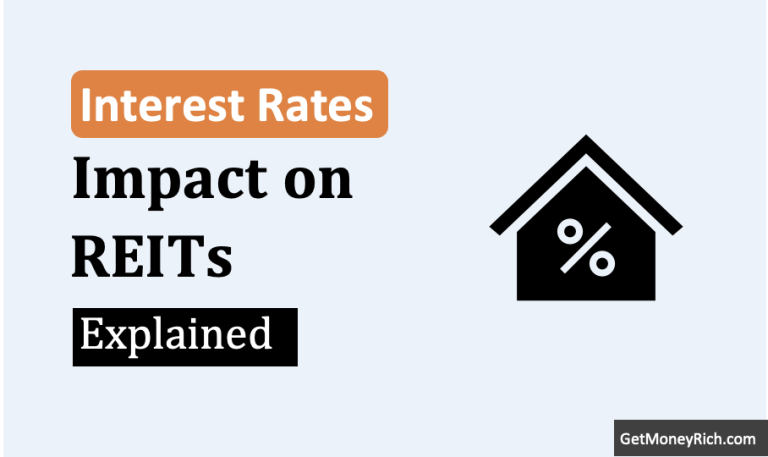Summary Points:
- A reader asked if Embassy REIT is worth holding for 7-10 years.
- Its price grew just 1.3% last year, but it offers a 6% dividend yield.
- REITs like Embassy prioritize dividends over big price gains.
- High occupancy and leasing to global firms show its strength.
- I’d hold it for steady income and India’s growing office market. You can jump to the conclusion from here
Introduction
I got a message from one reader who’s had held Embassy REIT stocks for more than 15 months now. He is wondering, should I stick with it for the long haul, or is it time to let go. He can hold it for 7-10 years down the line, but he is not sure if it worth it or not.
The share price of Embassy REIT has barely moved in last 1 year (just 1.3% up). So, I think, it’s a fair of him to question his holding. But it is also true that at current levels, Embassy REIT is yielding 6% dividend. So, his question to me was, what is my perspective of Embassy REIT as a long term investment.
A Bit About Embassy REIT
For those who don’t know about Embassy Office Parks REIT, here is a short into.
It’s India’s first Real Estate Investment Trust (REIT).
Basically, it’s a company that owns big office spaces across cities like Bengaluru, Mumbai, Pune, and Noida. Think of those shiny glass buildings where IT folks and multinational companies set up shop. Embassy rent out these spaces, collect the rent, and then share most of that money with investors like us through dividends.
In India, REITs have to give out at least 90% of their cash flow as dividends. Which is why Embassy’s yield is so attractive right now at 6%.
Now, this reader of mine picked Embassy with a long-term view, 7 to 10 years. But when the price stays flat for a year, it’s natural to feel a bit of doubt. So, let’s discuss what’s happened in the past, where’s the company at now, and what could the future look like for Indian REITs and Embassy in particular?
The Story So Far: An Income Generator
Over the last year Embassy REIT has only gone up by 1.3%.
Had I invested in Nifty 50 index, my return would have been about 3.2%.
But here’s something we should note. First, since Sep’2024, almost all stocks have performed badly. Since its Nov’2024 peak, Embassy REIT has fallen by about 8.9%. Since Sep’2024 peak, Nifty 50 has fallen by almost 11.5%.
Second, REITs aren’t like your typical stocks. They’re not meant to shoot up like a rocket. Their strength lies in stability and dividends, not wild price jumps. Investors who hold s REIT in their portfolio, do it for dividend yield and not for capital appreciation.
Just for reference, there is a quality REIT listed in the US market called “Realty Income Corp (NYSE:0). Since its listing in NYSE in 1994 (30 years back), it has compounded at a CAGR of 6.57% per annun. At its current price levels, this stocks is also yielding dividend of about 5.55% per annum.
Having said that, I’ll accept that US is a very mature market. A REIT not growing faster than 6.57% in the US is acceptable. But in a country like India, where inflation itself is 6%, slower growth rates will not go well with the investors.
So why hasn’t the stock moved?
Well, the last year has been tricky for commercial real estate. Interest rates in India (and globally) have been high, which makes borrowing expensive for companies like Embassy that rely on debt to grow. Plus, with hybrid work still a thing, some companies haven’t rushed back to fill office spaces. That said, Embassy’s occupancy rates have stayed strong, above 85%. They’ve even signed big leasing deals recently, like 3.5 million square feet in just one quarter last year. So, the business is doing well.
Use of Debt by Embassy REIT To Grow
One thing that stands out about Embassy Office Parks REIT is how it uses debt as a tool to fuel its growth, a common move for REITs looking to expand their portfolios. As explained in my earlier post of Embassy raising Rs.2000 crore through Non-Convertible Debentures (NCDs) in July 2024 to refinance older debt that was due in September 2024. This wasn’t just about paying off bills, it helped them lock in a slightly better interest rate (7.84% versus 8%+ earlier) and extend repayment timelines, freeing up cash to invest in new projects or upgrades.
For a company managing over 45 million square feet of office space with plans to grow further, this kind of debt juggling is key to staying ahead, even if it means carrying a manageable debt load on their balance sheet.
Peeking Into the Future: About Indian REIT
When I think about REIT in India, I feel optimistic.
India’s still a growing economy, right? Our cities are getting bigger, companies are expanding, and global players are setting up shop here. Just look at Bengaluru, every other day, you hear about some tech giant opening a new office.
Embassy’s properties are in these hotspot cities, and they’re not just any buildings, they’re premium, Grade-A offices that big companies want to occupy.
Over the next 7-10 years, I see demand for office spaces picking up. Sure, work-from-home isn’t going away completely, but hybrid models mean companies still need office spaces for collaboration. Plus, India’s becoming a go-to spot for Global Capability Centres (GCCs), those fancy back-office setups for multinationals.
Embassy’s already cashing in on this, 78% of their recent leasing came from GCCs in sectors like banking, tech, and retail. If this trend keeps going (and I think it will), their rental income could grow steadily.
Another point, building a top-notch office park isn’t cheap or quick, it can takes years in India. Embassy’s already got 45 million square feet of space, with more in the pipeline. They’ve got a solar park too, pushing green energy, which tenants love these days.
So, they’re ahead of the game compared to new players who’d have to start from scratch.
Embassy’s Strengths: Why I’ll Like To Hold
This isn’t some shaky startup, it’s backed by Blackstone, a global real estate giant, and has a strong management team.
Their portfolio is massive, Asia’s largest office REIT by area, and they’ve got over 250 top companies as tenants. That’s a sign of reliability. If a big name like Google, JP Morgan, PwC, etc trusts them, it’s hard to argue they’re doing something wrong.
The 6% dividend yield is a big pull for me.
Over 7-10 years, that’s a lot of cash flowing back to you. Imagine you’ve got Rs.10 lakh invested, Rs.60,000 a year isn’t bad, and if rents go up, those dividends could inch higher than that 6% levels. It will be especially beneficial for those investors who continue to hold it.
Historically, Embassy’s rental income has grown at a decent pace, around 5-7% annually in good years. If that continues, the yield could climb to 7-8% over time.
Consider this, suppose there is a person who bought Realty Income Corp (NYSE:0) in the US in year 1996 at price of $8.35 per share. At today’s price of $58 per share, the Realty Income has reported a dividend yield of 5.55%. It means, for our example person, his dividend yield will be close to 38.5% each year. Even a premium stock cannot grow at this rate each year. This is the advantage of holding a dividend paying stocks (like a REIT) for such an extend periods of time (30 years).
Coming back to Embassy REIT. They’ve got a debt-to-equity ratio of about 0.38, which isn’t crazy high but isn’t tiny either. High interest rates could squeeze them a bit. But they’ve been smart about it, refinancing at decent rates (around 7.8% last year), and their credit rating is top-notch, AAA/Stable.
That tells me they’re not drowning in risky loans.
Why Selling Might Tempt You
Okay, let’s play devil’s advocate.
If you’re sitting on Embassy for over a year and the price hasn’t moved, you might be thinking, “Why not sell and put my money somewhere else?” Fair point. If you’d invested in a good mutual fund or a growth stock instead, you might’ve made like 10-12% returns by now.
With Embassy, you’re betting on slow and steady, not quick gains.
- There’s also the risk factor. If interest rates stay high for years, or worse, go up, REITs like Embassy could feel the heat. Higher borrowing costs eat into profits, and that could cap dividend growth.
- Plus, if the economy slows down, companies might cut back on office space, hitting Embassy’s rentals.
- Their return on equity isn’t amazing either, around 2-3% over the last few years, which means they’re not squeezing out huge profits from the money they’ve got.
Conclusion
If I were in your shoes, I’d stick with it. Why?
That 6% dividend is like a loyal friend who keeps showing up with cash, year after year. Over a decade, it’ll pile up, and if India’s office market grows like I think it will, the stock price might finally wake up too. Maybe not a 100% jump, but even 5-7% annual growth plus dividends could give you 10-12% total returns yearly. I would also like you to read again this example of the US’s REIT called Realty Income Corp. It is a huge motivation for me to hold quality REITs for a very long term horizon.
That’s not bad for something this stable.
Embassy’s in that growth phase, building its base in a market that’s still young. REITs are new to India, and as more people understand them, demand for stocks like Embassy could rise.
I’ll also keep an eye on a few things. If interest rates shoot up or occupancy drops below 80%, it might be time to rethink. Same if you spot a better opportunity, like a stock with higher growth potential that fits your risk appetite.
For now, though, I’d hold tight, enjoy the dividends, and let time do its magic.
What is your idea about Embassy REIT? Tell me in the comment section below.
Have a happy investing.



